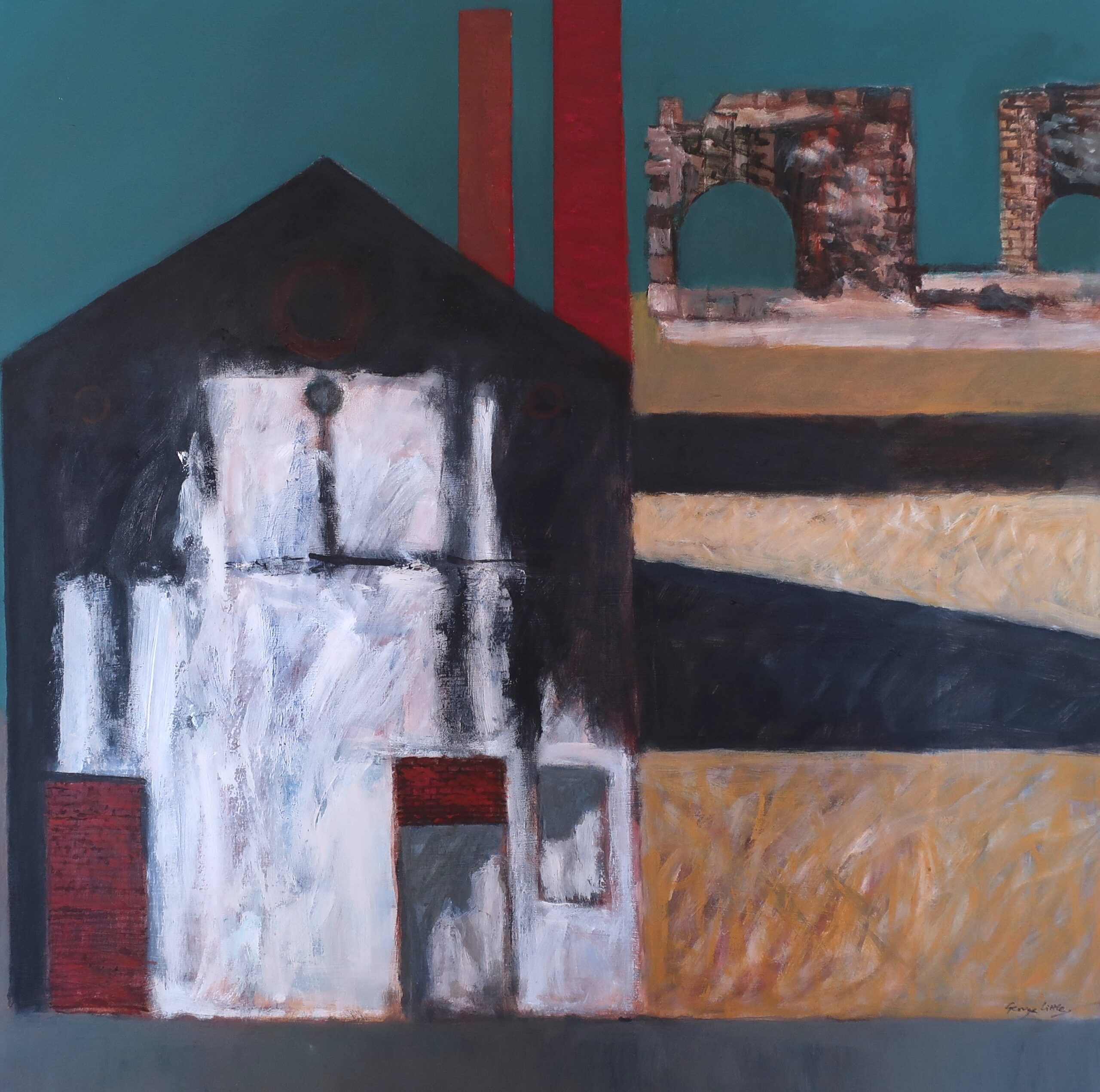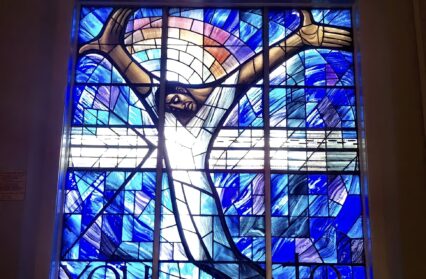In his new book about George Little, Peter Wakelin writes about his long-delayed response to a subject seared into the artist’s vision as a boy, the Swansea Blitz of 1941.
For seven decades, the Swansea-born artist George Little recorded the sites of industry and the gaunt remains left behind by deindustrialisation and urban decay, making it his life’s work to explore their dramatic forms and startling colours in photographs, drawings and paintings.
Born in 1927, George grew up next to the abandoned copper works, slag heaps and still-busy docks of Dylan Thomas’s ‘ugly, lovely town’. He wrote in 2004: ‘Everywhere the images of my choice are disappearing: pithead wheels, slag heaps, heavy industry, the fishing industry, even the streets of workers’ houses, and the Swansea docks as I knew them are virtually no more … my subject matter is almost a memory.’
He found his material on his own doorstep. The docks of Swansea in his youth still teemed with rail lines and cargo ships framed by the verticals of coal hoists and cranes. And the four miles of valley above the mouth of the River Tawe, once known as ‘Copperopolis’ and packed with smelting and manufacturing works, was being abandoned site by site to become the biggest industrial wasteland Europe.

However, it was only in his late eighties that George revisited his memories of the Swansea Blitz – the firestorm he witnessed as a teenager and the devastation that followed. He produced 35 paintings which were exhibited for Holocaust Memorial Day in 2015. He recalled:
The first bomb on Swansea fell in Danygraig Road on 17th June 1940 at 3.30 am. It did not explode but I was awakened by the sound of the bomb hitting a nearby house and breaking glass. My parents told me to go back to sleep and that no bomb had fallen. Then we heard the wardens’ whistles and we had to move out to take shelter in a friend’s house in Jersey Terrace. The Swansea Blitz lasted through the 19th, 20th and 21st of February 1941. It was a devastating attack when the centre of Swansea was virtually razed to the ground by 30,000 incendiary bombs and 170 tons of high explosive. A total of 41 acres were flattened and wherever I stood all I could see were piles of twisted girders, the remains of masonry and skeletal buildings. On the third night of the Blitz we went to stay with my aunt in Mumbles and I watched Swansea burn from the top of her garden on Mumbles Hill. My school, Swansea Grammar School, was destroyed and we pupils had to share with nearby Dynevor School, mornings one week and afternoons the next. Our walk to this school was past rubble and destruction through a no longer recognisable landscape.
It is striking that George didn’t draw or paint this subject when the devastation was still spread out before his eyes in the 1940s or the 1950s and he was studying at Swansea College of Art. The events of 1941 were too close, too horrifying, and they were layered with his experiences during National Service of the appalling aftermath of Allied carpet-bombing in German towns and cities. By 2014, when he began the paintings, the Blitz was more than seventy years past.
He worked quickly, putting his memories down on paper. Skies were the colours of flame, architectural elements of once-proud offices and shops were empty outlines, and foregrounds were wastes of rubble, pools of water, broken property and undoused fires. In some images he pasted scraps of wallpaper referencing the cut-away views of living rooms and bedrooms behind collapsed frontages.
George’s Blitz paintings brought back the ugly torment of his town for generations who knew almost nothing of it. So much of the centre was lost completely, and so much has been redeveloped since, that physical reminders take some finding. The ghostly footprints now are absences more than presences, the parts of the town where no pre-war buildings can be found. Only a few scars can be detected in the stones: in the walls of St Mary’s Church, Mount Pleasant Baptist Church or Castle Buildings, the long white front of arches that George painted rising defiantly above the rubble.
The bomb-site paintings were the culmination of a lifetime spent seeking the beauty that might lie amid destruction, dereliction and decay. In these last works, as in so many that went before them of derelict smelting hoses, disused mines or terraced streets marked for urban clearance, George Little revealed a quality that the art critic Peter Fuller once called ‘redemption through form’. He had been doing it all his life; making a strange beauty from the ugliest of matter.
—
George Little: The Ugly Lovely Landscape is published by Parthian.
Peter Wakelin and Prys Morgan appear in an event in Swansea to celebrate George Little’s work at 7pm on 16 November organised by Cover to Cover Bookshop. More info and tickets here.












